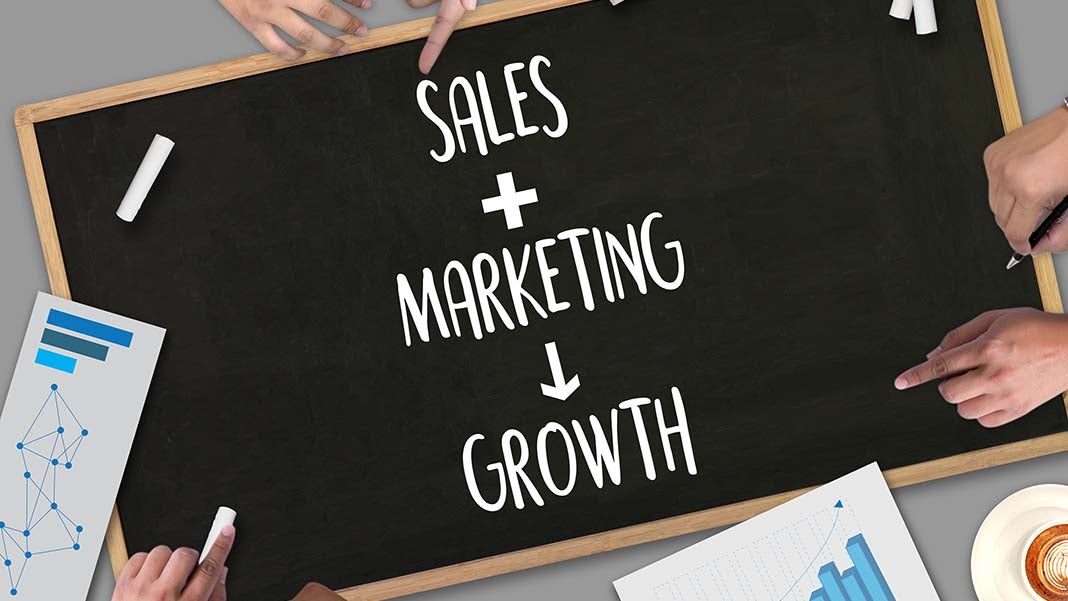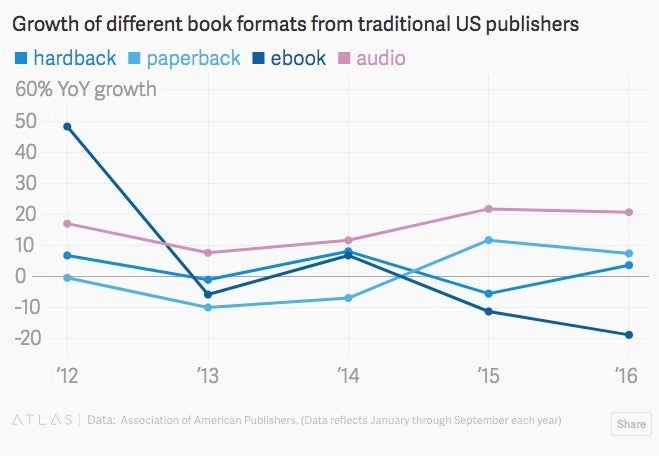
“Alexa, what’s the temperature outside?” I say as I juggle my daughter and son into their clothes for daycare.
Five years ago, I didn’t think I’d end up asking a little round gizmo to give me information.
Especially since I already had a mini-computer in my pocket—my phone. But here I am talking to a machine… and getting a response back!
That’s how quickly our world is changing.
Artificial intelligence, voice-based search, augmented reality…. Those things used to be the stuff of sci-fi movies. Today, we experience them in real life—sometimes without knowing it—and pretty soon we won’t even think about them as anything out of the ordinary.
But as business owners and marketers, we do have to keep thinking about them.
As you’ll see below, these trends are changing the way we reach, interact with, and influence our audiences.
In other words, the sustainability of our businesses depends on you understanding these changes, adapting to them, and leveraging them to achieve your goals.
Here are just 10 of the marketing trends that are already happening in 2018:
Trend #1. Rankbrain
Rankbrain is Google’s artificial intelligence tool that goes into your website and gauges how well your visitors are engaging with your content.
That’s one way Google determines how good your content is. If visitors click out of your page right away, then that’s a signal for Google that it must not be very good. And so, Google doesn’t rank your page as highly.
On the other hand, if your visitors stay and linger, then that tells Google that your stuff must be great. Your site gets more “points” with Google when it ranks it on the search results page.
What This Means for You
Whether you’re publishing a post or a page, make it as in-depth as possible. Longer blog posts, upwards of 1500 words, tend to rank more highly on Google.
Adding multimedia elements to the page also helps your site visitors to stay longer. These include images as well as embedded audio and video.
Of course, I’m not advocating that you add these things willy-nilly. These multimedia elements should be relevant to the page and serve a purpose. For example, if your post is about conflict resolution strategies, you could add the following elements:
- An infographic summarizing the strategies
- Videos of actors demonstrating the strategies
- Embedded audio recording of you reading the blog post
Trend #2. Webinars on-demand
Webinars are great marketing platforms. For one thing, they’re considered valuable pieces of content, so they make a great incentive to invite people into your email list. Landing pages for webinars tend to convert better than those that offer PDF ebooks or short reports (30% versus 20%, according to Leadpages).
Webinars also convert better for sales than the traditional sales page does. Whereas the typical sales page converts around 2.78%, depending on industry (source), webinar sales conversion rates can be at least 10 times that.
The hottest trends today are webinars on-demand and hybrid webinars. This means that, instead of doing them live, marketers record their most successful webinars and provide them at a date and time that’s most convenient to their audience. With hybrid webinars, you can combine both pre-recorded and live elements.
Marketers are using on-demand webinars as part of their sales funnels to get people into their mailing list and turn them into paying customers much faster than with live webinars. What’s more, everything is automated, so they’re literally making sales in their sleep.
What This Means for You
If you’ve been wanting to try webinars but have been too intimidated by the idea, then on-demand webinars may be the perfect way for you to get started.
I still recommend you do live webinars, though, because the interaction gives you many good insights into your audience. For sales, particularly, live webinars can be more effective since you can address objections in real time.
And if you’ve been doing webinars, then it’s time to leverage your most successful webinars by making on-demand webinars part of an automated sales funnel.
Trend #3. Native Video on Social Platforms
Creating and publishing videos online used to be expensive, time-consuming, and complicated affairs. You needed an expensive camera as well as expensive software to edit your video. And then you or a professional video editor had to edit your video into something that made sense. Then, depending on how long your video was, you’d wait minutes or hours for it to render. Only then could you upload the video to YouTube or some other platform, where it took more time before your video was finally live.
Today, all you need to post a video online is your smartphone. And practically all social media platforms, from YouTube to Instagram to Facebook, let you record and upload your videos instantaneously from inside the platform. This is what’s known as native video (as opposed to linking to a video from a different source).
Some platforms even let you broadcast video live, in real time, and reward you for it. Facebook, for example, favors Facebook Live streams by displaying it on people’s news feeds more than pre-recorded videos.
What This Means for You
Because it’s now easier, cheaper, and faster to create and publish videos, you no longer have an excuse not to make it part of your overall marketing strategy.
And because social platforms favor live videos, audiences are expecting less polished, TV-quality videos. Let’s face it, how much production value can there be when you’re shooting video with your phone?
Of course, to be effective, you still need to meet a minimum level of production quality—your audience should still be able to see and hear you. But other than that, the key is to be authentic and relevant to your audience.
Trend #4. Mainstreaming of online learning
Ask a person where they would go to learn anything, and the answer used to be an educational institution (such as a school, college, or university) or some other formal organization (like a community center).
But not anymore. Both individuals and companies are recognizing the value of non-traditional education, such as online classes. Some have started accepting non-traditional credentials.
What This Means for You
If you’re interested in offering online courses, you have a bigger market. More individuals are aware of online courses and are open to taking them.
Aside from individual students, consider if your course topic is something you can offer companies. It’s easy to see the opportunity if your expertise is related to business skills, including coding and the use of specific software.
But even if your course is about “soft” skills, companies may still be interested in them. For example, your stress-reduction course may be fit right in some companies’ wellness programs.
Trend #5. Increased YouTube moderation
YouTube is the largest online video platform with over 1 billion users—that’s one-third of all people on the internet!
But if you’ve watched a few YouTube videos, you’ve probably noticed that it’s full of trolls and cyber bullies who don’t have anything better to do with their lives. YouTube has responded by hiring thousands of additional staff to protect creators from inappropriate content, such as obscene comments and videos that endanger and exploit children.
What This Means for You
Based on the number of users, YouTube is the second largest website in the world, second only to Google. It is also considered the second largest search engine, again second to Google. In fact, some internet users bypass Google entirely and go straight to YouTube to search for a specific keyword.
YouTube’s “house cleaning” is good for you, because it makes the platform a safer place for you and your audience to use. What’s more, it gives creators who have integrity more chances to rise to the top and compete against unscrupulous creators who try to game YouTube’s algorithm.
If you haven’t been publishing videos on YouTube yet, now’s a good time to get started. Create videos to address the most common questions you get from your prospects, to demonstrate how to use your product, and to highlight your customers’ success stories. Those are only a few of the ways you can use video.
Trend #6. Rise of audiobooks
When digital publishing came into the scene, many predicted the death of printed books. To be fair, brick-and-mortar bookstores did close down, but printed books are still here and sales are on the upswing again.
But the biggest, most dramatic growth has been in audiobook market. The Audiobook Publishers Association reported a 39% increase in audiobook production in 2017 and “26% of the US population has listened to an audiobook in the last 12 months.”
According to this chart from the Association of American Publishers, the growth of audiobooks has been outpacing hardbacks, paperbacks, and ebooks since 2013.
Source: qz.com
What This Means for You
Audiobooks are the next frontier for both traditional and self-published authors. Some publishers are even skipping books altogether and going straight to audio, especially for shorter pieces.
If you’re already a published author, or aspiring to be one, then consider making your books available in the form of audiobooks as well.
Amazon’s Audiobook Creation Exchange (ACX) makes it easy and inexpensive to do so. The publishing tool is free and you can either do your own audio recording or hire a professional narrator from the ACX marketplace. ACX then distributes your audiobook on Amazon, Audible, and iTunes and gives you up to 40% in royalties.
Trend #7. Expected growth in consulting
Consulting and coaching have been around forever, but the field is only getting bigger. The US Department of Labor expects the consulting field to grow by 22% through to 2020.
More specifically, this growth is expected in the areas of technology, work/life balance, and behavioral skills. The demand for consulting in technology is driven by the fast pace of innovation and development in that area.
As for work/life balance, an increasing number of companies are recognizing the importance of wellness in maintaining high productivity, engagement, and satisfaction, while reducing absenteeism. Since this expertise isn’t normally available in-house, then they invest in consulting services to address this area.
Finally, behavioral skills will always remain valuable, not just in the workplace, but in daily life. These include anything from effective communication to time management to conflict resolution.
What This Means for You
If you’re a freelancer providing services to clients, then you probably have enough expertise to offer a package of services as a coach or consultant. As such, you may be hired to give advice, catalyze change, and increase accountability. In the case of organizations, they may hire you to supplement existing staff.
Consulting is a good way to add another income stream in your business. There’s very little overhead costs and you get paid more as a consultant than as a freelancer. The easiest way to get started is by offering one-to-one consulting or, in the case of companies, group consulting. Consulting may also lead to other income sources, such as paid speaking.
Trend #8. Micro-influencers
Partnerships are one of the best ways to quickly grow your reach and income. But it can be difficult to approach potential partners when you’re just starting out and don’t have a lot of social proof to offer.
Fortunately, people are now recognizing the power of micro-influencers. These are individuals who have a relatively small following (for example, hundreds instead of thousands of followers or subscribers). That’s because micro-influencers tend to get more engagement from the audience they do have, and this translates to better conversions to sales.
In fact, micro-influencers can be so authoritative within their tribes that companies have made micro-influencer partnerships an integral part of their marketing.
What This Means for You
Don’t let having a small audience stop you from approaching possible partners. Dig deep to uncover what you can offer them, even in the absence of a large audience. There are many ways you can partner with someone: cross-promotion, creating a product together, and becoming an affiliate for them.
By the same token, don’t be quick to dismiss a potential partner who seems too “small” for you. They may not have a big audience, but their followers may be highly engaged and ready to follow their recommendation.
Partnerships will help you get in front of other people’s audiences, elevate your status, and expand your offers. This is especially important if you’ve burned out your list with your offers. And if you’re struggling to create a new product or implement a particular strategy, partnering with someone who has a similar audience but different skill set may be the answer.
Trend #9. Hypertargeting
An automated sales funnel is a system for automatically getting people into your list and facilitating their journey from prospect to paying customer. With the use of existing technologies, you can literally “set it and forget it.”
Digital platforms are getting so much data from users that it’s easy for advertisers to target just the right people for their offers. This targeting isn’t just based on demographics, such as age, gender, and geographical location. But it can also be based on specific interests and behaviors.
This ability has made automated sales funnels much more effective. “Broadcast” communication, where you try to reach everyone and hope your message lands on the right ears, is not a viable option for those with small budgets. Unless you’re Coca-Cola, hypertargeting is the way to go.
What This Means for You
Hypertargeting has made it much easier for you to reach your ideal customers. This means you can reduce your advertising costs and increase your conversion rates at the same time.
Of course, the assumption is you know exactly who your ideal customer is. If you haven’t drawn up a customer avatar, download our customer profile template here to quickly make one.
To make hypertargeting work for you, you need to know (or make an educated guess that you can validate as you go along) about your ideal customer’s interests and behaviors. That includes what books they read, what Facebook groups they belong to, what item they last bought, and so on.
Trend #10. Better VoIP
VoIP, or the ability to make phone calls over the internet, has been around for years. But it used to be terrible. Connections cut in and out. The audio quality was inconsistent. Or it simply wouldn’t work.
But today, with faster wireless speeds and better technology overall, the quality of VoIP has improved immensely. Facebook also offers VoIP through its messenger app. As of 2017, the Facebook messenger app had 1.2 billion active users per month, making it the second most popular mobile chat app (with WhatsApp being the top).
What This Means for You
Improvements in the quality and cost of VoIP means you can have a phone conversation with almost anyone, anywhere in the world. This is important because telephone conversations are still more effective ways of making sales than web-based platforms. Even the most successful webinar probably can’t compete with a good sales conversation.
That’s because people nowadays are more skeptical when anybody asks for their credit card. They want to think through significant purchases. Getting on the phone with them is one of the best ways to help them see if something’s a good fit for them or not.
If people think they want your offer but aren’t quite sure, talking to them on the phone and answering their questions in a non-threatening, no-pressure way can guide them to a decision they’re confident and happy with.
With all the talk about AI and bots, it’s easy to lose sight of the power of human interaction. Humans still prefer humans. In fact, people are becoming more skeptical of mediated communication and prefer to speak to somebody first. Use VoIP, when necessary, to do that.
But Some Things Never Change
These are exciting trends and it’s easy to get caught up in bright, shiny objects and lose sight of the essential principles. These are things that never change and should continue to be the underlying foundation of your marketing.
I’m talking about things like putting your audience first, doing business with integrity, and building authentic relationships.
Keep these things firmly in place, no matter what technology you use.













